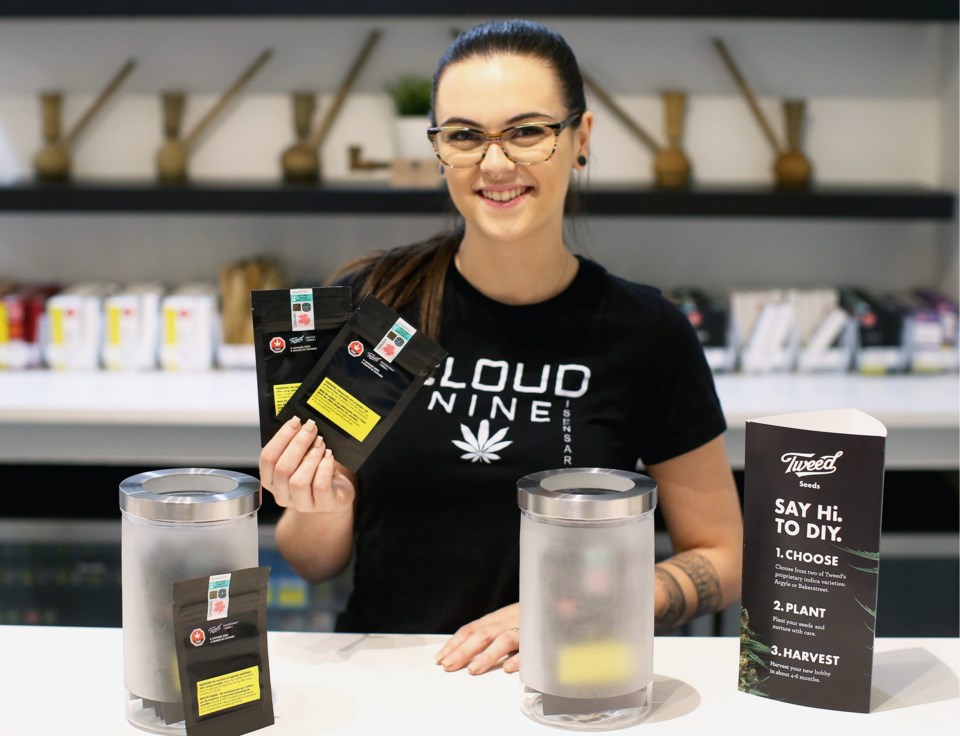It seemed like a match made in heaven, or at least in West Coast stereotype: legal-to-grow marijuana in the City of Gardens.
Except while it might be permissible to plunk a few plants among the tomatoes in the garden this spring, officialdom isn’t making it easy.
Canada’s new cannabis law allows Joe and Jane Victoria to grow up to four plants at home (that’s four for the household, not per person).
The catch is that they can only do so with legally obtained seeds, and not only is the selection of such seeds restricted to one or two strains but they are expensive — if you can find them. There’s a shortage.
In other words, it’s like being told you may make wine at home, but only chardonnay, and oh, by the way, there are no wine kits.
Meanwhile, a flourishing black market allows people to buy a wide variety of seeds and plants for a fraction of the price paid by those who go the legal route.
That matches what’s going on in the wider weed world, where those vendors who operate with the government’s blessing are getting clobbered by those who don’t.
The south Island is awash in relatively cheap pot being sold outside the official system.
As for whether Victorians actually want to grow plants at home, Jo Wyld says yes, indications are many do.
Wyld led three sold-out Cannabis Basics for the Home Grower sessions at Saanich’s Horticulture Centre of the Pacific this spring.
Attendees included a mix of new and experienced growers — students, some curious older gardeners, a few people with medical licences and “a smattering of middle-aged men who had been experimenting in their basements for a while.”
Wyld said many workshop participants were unaware of the government’s rules on where to get their seeds and, once she explained what the legal path entailed, weren’t all keen on following them.
They blanched when Wyld told them she had paid $68, including shipping, for four seeds from the provincial government’s B.C. Cannabis Stores, and that even at that they were difficult to come by.
The B.C. Liquor Distribution Branch acknowledges the shortage. The problem is that only one of its licensed producers — Tweed, an arm of the giant Canopy Growth — has provided seeds.
Only one cultivar, an indica strain called Bakerstreet, is available on the B.C. Cannabis Stores website. “We are hoping that more licensed producers come on board,” said the distribution branch’s Kate Bilney.
The only other place to buy seeds legally is in a government-approved store, of which Victoria now has four, with Clarity Cannabis opening on Gorge Road this past Saturday. Clarity intends to sells seeds, but has none in stock.
The Original Farm is allowed to sell seeds at its two stores, but doesn’t. That leaves Fort Street’s Cloud Nine Collective, which sells four-packs of Bakerstreet and of another Tweed strain, Argyle. At $64.99, they’re more expensive than those from unsanctioned-but-plentiful sources, but at least carry the legitimacy of an excise stamp, which matters to some buyers.
“There are a lot of people who, now that it’s legal, are comfortable coming in,” says Cloud Nine’s general manager, Sacha Romeyn.
That echoes the experience of Derek Hass, owner of the Mr. Fertilizer hydroponics store on Burnside Road West. On average, one or two totally green — as in inexperienced — growers wander in each day, wondering what they have to do to grow their four plants.
Sometimes the customer is a total newbie, and sometimes it’s buddy who used to grow in the ’80s before he got married and put on a suit and tie, but has had his curiosity rekindled now that dope-growing has the government’s imprimatur. “These people are coming back,” Hass says.
The store now stocks an outhouse-sized growing tent designed for those wanting to raise four plants indoors. It’s not cheap, though: Add lights, filters, fans and whatnot, and the price nudges $1,500. Nor is it easy. Indoor grows need proper temperature, humidity, lighting, soil, plant food, air flow and odour control.
It’s less costly to grow outside. “If you can grow a good tomato or pepper, you’re going to grow a good pot plant,” Hass says.
There are restrictions, though. People are not allowed to grow outdoors on any property bordering a school, playground or other public place frequented by minors. Plants can’t be visible from public places.
And, practically speaking, there’s a timing issue. Anyone wanting to grow outdoors should have their plants in the ground by now, Wyld said.
But then, in the City of Gardens, green thumbs already know that.



